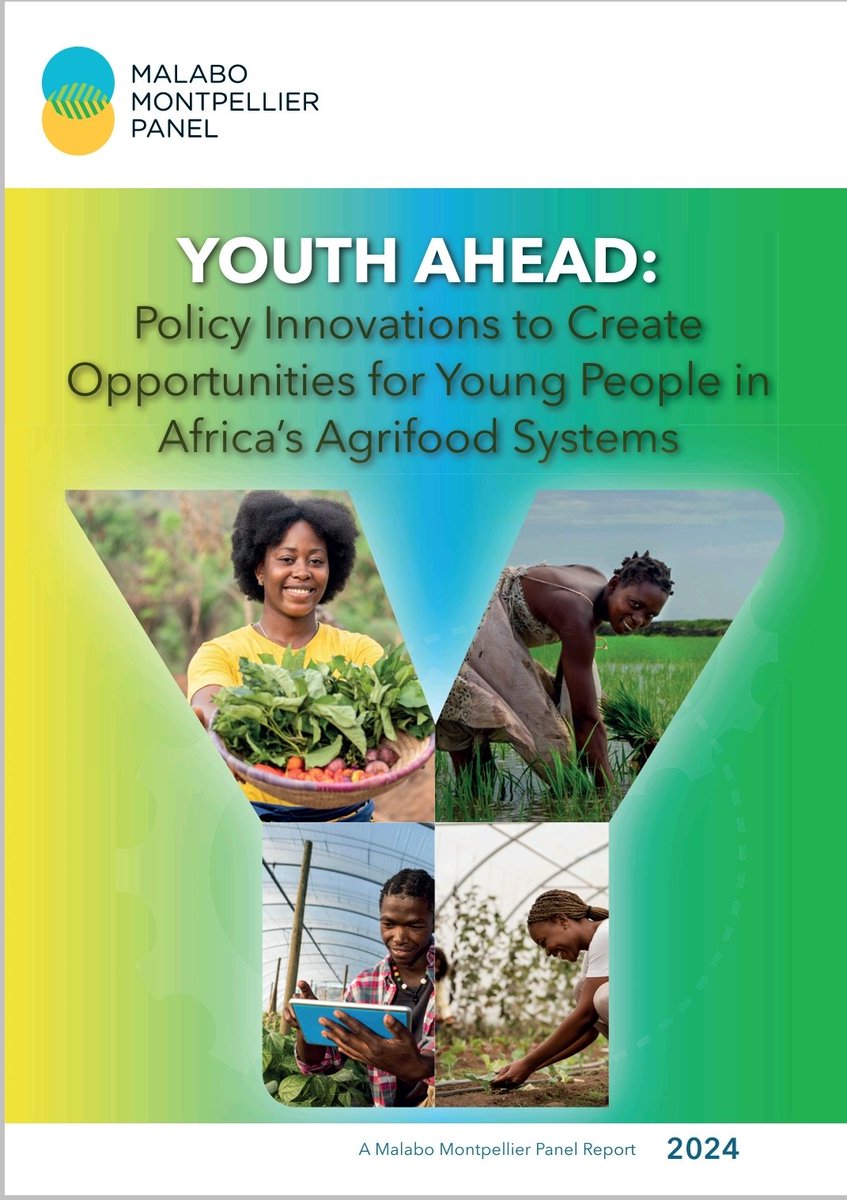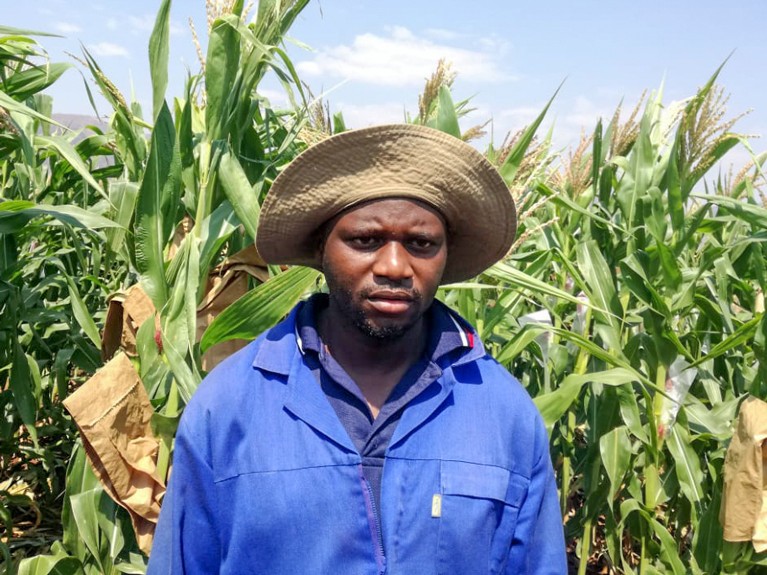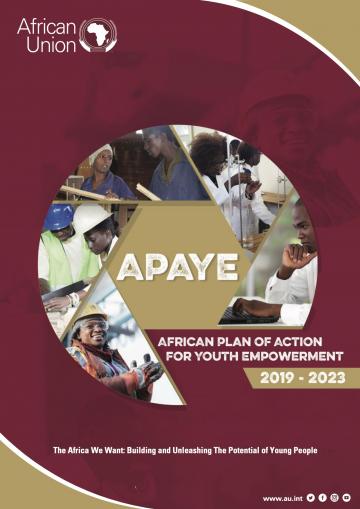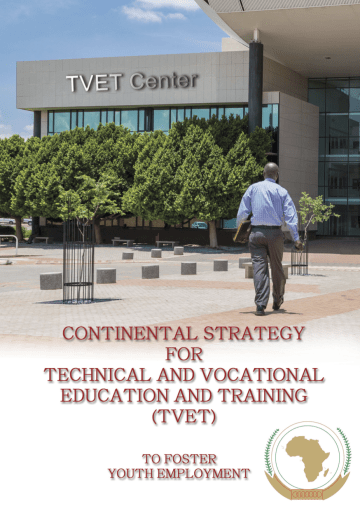 Montpellier Panel (2024) YOUTH AHEAD: Policy Innovations to Create Opportunities for Young People in Africa’s Agrifood Systems #158 p.
Montpellier Panel (2024) YOUTH AHEAD: Policy Innovations to Create Opportunities for Young People in Africa’s Agrifood Systems #158 p.
This report reviews the challenges limiting young people’s engagement in agrifood systems and demonstrates opportunities to empower Africa’s youth in agrifood systems.
The report highlights the successful strategies implemented by various countries in Africa and summarizes the key findings of four systematically selected countries: Ghana, Uganda, Zambia, and Zimbabwe. These countries are at the forefront of empowering youth in their agrifood systems. The report reviews these countries’ policy and institutional innovations as well as their programmatic interventions targeting youth in the transformation of food systems. Their experiences are noteworthy for other African countries.
- Diversifying education and training programs including skill up for entrepreneurship and employment for young Africans in agriculture and agribusiness;
- Addressing trade barriers coupled with technology infrastructure for jobs in a thriving agro-processing sector;
- Implementing dedicated processes to include youth in policy- and decision-making empowering youth; and
- Simultaneously addressing green growth and employment agendas with youth as investors.
In Ghana, initiatives such as the Youth Employment Agency Bill and the National Youth Policy were
cited as examples of efforts to upskill and support youth to enter the agri-food sector. As part of its plan to industrialize agriculture, increase food security and employment opportunities, and lower poverty rates, the country launched the Youth in Agriculture Programme (YIAP), which deployed youth-focused initiatives to change the negative perception of farmers as uneducated, unskilled laborers with low economic returns. Youth-focused institutions and programs in Uganda, such as the Presidential Zonal Industrial Hubs, the
Uganda Industrial Research Institute Innovation Centre, and the Youth Livelihood Programme are providing young people with
marketable skills in
agri-food processing and product development, ICT, agricultural mechanization, and entrepreneurship. To further support digital transformation, the government launched the
Digital Skills Acceleration Program and the Digital Transformation Program, which aim to increase access and usage of ICT by vulnerable groups, including small-scale farmers.
In Zambia, the government set up the Skills Development Levy to mobilize resources that can be invested in youth empowerment, notably in strengthening the infrastructure of technical and vocational training institutions. Through the Technical Education, Vocational and Entrepreneurship Training Authority (TEVETA), the TEVET bursary enables vulnerable youth to benefit from skills training, including courses in general agriculture, food and beverage production, automotive mechanics engineering, electrical engineering, and computer studies.
In Zimbabwe, innovation hubs in higher education institutions provide technical and research-based solutions for skills enhancement in the country’s labor force. Introduced under the framework of the country’s Technical Vocational Education and Training (TVET) Policy, these hubs equip students with specific industrial skills to enable them to operate entrepreneurially with the capacity to incubate any businesses they create. Beneficiary sectors include agriculture, energy, and mining.
Extracts
Between 10 and 12 million young people entering the labor market each year (page 5)
Africa’s growing urban population and middle-class demand more varied, nutritious, processed, ready-to-cook and ready-to-eat foods. This increased demand can generate new jobs and entrepreneurial opportunities for young people along African agribusiness value chains. (page 1)
A thriving agro-processing sector, in particular, offers a multitude of benefits. Transforming, preserving, and preparing food for intermediate or final consumption brings together the best of the agricultural, manufacturing, and services sectors. (page 2)
Although Africa’s agricultural exports have increased in recent years, the continent is still a net importer with a food import bill of approximately USD 80 billion annually as compared to USD 61 billion in exports. (page 4)
Africa could gain up to USD 1.0 billion annually from higher exports of processed foods, livestock products, coffee, nuts, dried fruits, and other agricultural commodities through meeting international food product safety standards (page 44)
Africa’s combined food and beverage markets will triple in value from USD 313 billion in 2013
to USD 1.0 trillion by 2030, with consumption in cities driving the demand for more products. Moreover, the share of processed foods is projected to increase five to tenfold between 2010 and 2040, translating to nearly 80 percent of staple food demand. (page 5)
A rise in the numbers of local small and medium-scale enterprises processing staples and other crops has been observed across the continent in recent years. (...). Over the next four years, off-farm agrifood jobs are expected to account for between 18 and 22 percent of new jobs in Tanzania, 18 percent in Nigeria, and 11 percent in Rwanda. The number of food manufacturing jobs in these three countries is expected to grow between 12 and 20 percent. (page 6)
TVET opportunities remain low across the continent. Although African countries are increasingly
investing in technology and knowledge-intensive technologies, including irrigation technologies,
farm machinery for processing, and horticulture, there are few targeted strategies or policies in place
for accompanying skills development. (page 20)
- In 2015, only 2 percent of African university students studied science, technology, engineering, and math subjects related to agriculture, forestry, fisheries, and veterinary studies, all of which are important for future job opportunities. (page 19)
- In 2019, about 10 million young people were enrolled in technical and vocational secondary education—on average, the percentage of youth aged between 15 and 24 years that are enrolled in vocational education is a meager 3 percent. (page 17)
- A recent study on skills in mechanization and automation in agro-processing in Ethiopia, Kenya, Nigeria, and South Africa found that only 28 percent of staff in the firms sampled were qualified to work with machinery or with automated systems (page 21)
- Africa’s universities need to expand their curricula to include programming and algorithm design so that they can become hubs of digital innovation for Africa’s agrifood systems. (page 22)
- The Teacher Training Program (TTP) is a five-year program that was established by the African Institute for Mathematical Sciences (AIMS) in South Africa in 2003, Cameroun and Rwanda in 2018, and Ghana in 2020 in partnership with the MasterCard Foundation. (page 24)
Pre-production
The pre-production segment of agrifood value chains offers numerous opportunities for young people to unleash their creative potential, ranging from the design and development of new technologies and innovative tools, including crop breeding and biotechnology, to information-sharing using digital platforms to provide weather forecasts or crop management or animal husbandry advice to farmers. (...) The applicability of what is taught to solve societal problems will increase the interest of youth in Science, Technology, Engineering, and Mathematics (STEM) subjects. (page 20)
Crop breeding and biotechnology
Skills in this field can be used to develop crop varieties that better meet societal needs—for example, varieties that reduce drudgery in the preparation of foods, provide increased yields, have improved taste or nutritional content, or take less time to mature and require less water. - For example, Prince Matova, a young breeder from the Crop Breeding Institute of the Ministry of Agriculture in Zimbabwe, received an award from the International Atomic Energy Agency and FAO for developing Zimbabwe’s first cowpea variety developed with a nuclear technique. This cowpea variety can be grown in arid and semi-arid regions of Zimbabwe.
- New cassava varieties that peel and cook easily were reported to reduce drudgery from household chores and crop production in Nigeria.
- The CGIAR, in partnership with National Agricultural Research Systems, helps to integrate more youth and women into seed production enterprises through various projects in African countries: ICRISAT supported a seed company called Mbozi Highlands (MHEG) and sustains seed business hubs for groundnut and sorghum in the Southern Highlands of Tanzania (page 28)
Genetic engineering might include:- developing crops that can express toxins similar to organic pesticides in order to control pests, leading to a reduction in costs on labor, pesticides, equipment, and fuel.
- developing innovative fertilizer technology to reduce the usage of inorganic fertilizers and improve soil quality. These include cost-effective phytoremediation technologies, which is a plant-based approach to extract and remove elemental pollutants or lower their bioavailability in soil.
- enhance nutrient utilization by plants, reduce nutrient runoff, and increase soil organic carbon sequestration, while at the same time increasing agricultural productivity by producing hardier crops that thrive in harsh environments with lower levels of fuel, labor, fertilizer, and water (page 29)
Production
Efforts have been made by some African governments to promote mechanization by providing machinery at subsidized rates to farmers, establishing state-led mechanization hire schemes or tractor assembly plants, and facilitating private service providers through the provision of state-subsidized tractors. (page 30)
DigiFarm is an integrated mobile-based platform for digital services tailored for smallholder farmers that was launched in 2017 by Safaricom, Kenya’s largest telecommunications provider, with support from the AgriFin Accelerate program of Mercy Corps. DigiFarm is a free mobile platform that provides farmers with convenient, one-stop access to quality farm inputs at discounted prices. (page 32)
Advances in robotics and its application to agriculture are happening fast around the world, and the share of farmers that can already benefit from digital technologies in African agriculture is also growing fast, taking into account that farms ranging from 10 to 20 hectares represent the fastest growing farm segment in some countries in Africa and already account for more than 5 percent of the farm area in several countries. (page 33)
FarmDrive in Kenya collects and aggregates data from multiple sources to build credit scores for
farmers so that they can access loans and other financial services. Between 2014 and 2018, FarmDrive distributed over USD 300,000 in loans to Kenyan farmers, 37 percent of whom were youth (page 34)
Digital agriculture—the application of digital tools along agricultural value chains—empowers young farmers with knowledge, enables the optimization of agricultural productivity, and enhances their access to upstream and downstream markets (page 35)
Harvest
Food lost immediately after harvest in Africa has been estimated to be between 30 and 40 percent of what African farmers produce (...) Most small-scale farmers tend to use traditional methods to increase the shelf-life of the crops before storing or transporting them. (...) Most harvest work is manual. Adoption of improved automated harvest technologies would not only reduce losses at harvest, but also increase youth interest in agriculture for income generation, given the reduction in drudgery. (page 37)
- For instance, Agroways in Uganda has partnered with 25,000 smallholder farmers and producers to provide storage space in their warehouses that are certified for grain handling and storage
- Sesi Technologies (Ghana) offers small-scale farmers a FarmerPack consisting of the GrainMate moisture meter, ZeroFly hermetic bag, grain drying services, grain threshing services, warehousing services, market access via the AgroMarket app, and post-harvest management training. (page 38)
Agro processing
The agro-processing sector is labor-intensive and presents high employment generation potential, both in absolute terms and compared to other sectors of manufacturing. Additionally, the different stages
food undergoes during processing to add value require different expertise and skill sets to manage,
thus creating new and additional employment opportunities that youth can tap into. (page 39)
A major impediment to the growth and productivity of agro-processing enterprises operated by youth is a lack of the necessary skills to profitably manage them. (page 41) With an average of 11 million young people joining the African labor market and only 3.7 million jobs being created annually, the transition to a bioeconomy can play an important role in addressing Africa’s employment gap. (page 42)
Marketing
Examples of digital solutions that enable direct food marketing and trade include:
- AgroTrade, which links Ghana’s farmers with large buyers and ensures direct trading.
- AgroMart, on the other hand, enables young people in Ghana to work as distributors, helping smallholder farmers sell their produce at fair market prices
- In Kenya, Farmster is a digital matchmaking platform between smallholder farmers and buyers that works over an SMS chatbot to create market linkages for farmers without internet access
- In Uganda, TruTrade Africa is a social enterprise that offers smallholder farmers a reliable route to market and fair prices for their produce
- Other digital solutions that have provided market access to farmers include Farm Kiosk and Club Tiossane. The latter is an online delivery service in Senegal that provides a market for local food producers by connecting them to hundreds of local businesses. (page 45)
Despite the numerous digital agricultural marketing tools in Africa, the majority offer only a limited range of solutions and lack novelty. (...) ICT capacity can be built through public-private partnership investments targeting youth, such as the establishment of innovation hubs and ICT business incubators and funding competitive grants, innovation prizes, and other incentive programs. (page 46)
- Agriculture Innovations Hub, founded in 2019 in Ghana, helps to identify challenges in the agriculture industry and develop innovative solutions.
- Edo Agric Digital Innovation Hub, launched in 2022 in Edo state, Nigeria, is a virtual hub grouping organizations with complementary expertise in agriculture.
- FAO has supported the establishment of in-country innovation hubs to support farmers and value chain actors that are linked through the Global Network of Digital Agriculture Innovation Hubs. (page 49)
Further Resources
UNESCO (2023)
REVIEW OF THE SCIENCE, TECHNOLOGY & INNOVATION STRATEGY FOR AFRICA (STISA-2024). FINAL REPORT (Shorter Version) #31 p.
A decade ago, the AU and the African Development Bank, based in Abidjan, Côte d’Ivoire, began work on establishing a research and innovation fund. Its scope has since been expanded to include education, and it is now called the African Education, Science, Technology and Innovation Fund. Countries were asked to contribute US$2 million each, which would be matched by the bank from its own sources. Progress has been slow. So far, only
Botswana and Ghana have committed funding.
The fund’s overall size has been set at $300 million, but who else will contribute and eligibility criteria for funding applications are yet to be worked out. The fund needs to become a priority, say the authors of a review of AU science policies over the past decade, commissioned by the AU and the UN science agency UNESCO, and published at the end of 2023 (see
go.nature.com/3sixqis). Ultimately, that means more heads of government will need to authorize the required finance.
AU (2019)
African Plan of Action for Youth Empowerment (2019-2023)
Developed in 2019, the African Plan of Action for Youth Empowerment (APAYE) is a five-year framework for implementing the AU African Youth Charter. APAYE provides an overarching guide for implementing youth empowerment programs and policies in Africa. It offers guidance for AU member states to incorporate youth agribusiness considerations and programming into their National Agriculture Investment Plans and youth employment and entrepreneurship development
This initiative aims to harness Africa’s youth as key contributors to the continent’s development and create economic opportunities for young people in strategic sectors, including agrifood industries. Energize Africa consists of public sector, private sector, and blended finance components designed to catalyze innovation and investment. These are to empower youth to play an active role in shaping the continent’s future.
 Montpellier Panel (2024) YOUTH AHEAD: Policy Innovations to Create Opportunities for Young People in Africa’s Agrifood Systems #158 p.
Montpellier Panel (2024) YOUTH AHEAD: Policy Innovations to Create Opportunities for Young People in Africa’s Agrifood Systems #158 p. AU (2019) Plan of Action for the African Decade for Technical, Professional, Entrepreneurial Training and Youth Employment (2019-2028) # 68p.
AU (2019) Plan of Action for the African Decade for Technical, Professional, Entrepreneurial Training and Youth Employment (2019-2028) # 68p.





No comments:
Post a Comment